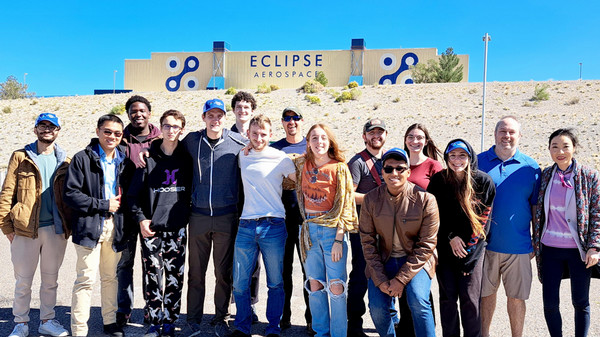
Our understanding of the universe continues to expand due to dedicated scientists and enthusiasts like the University of Hartford's Nationwide Eclipse Ballooning Project (NEBP) team. The team recently flew to Albuquerque, New Mexico to observe and gather data with a high-altitude balloon for the annular solar eclipse.
The team was hosted by Southwest Indian Polytechnic Institute (SIPI) after arriving in New Mexico on Oct. 12, the team met with SIPI faculty, Dr. Milford Muskett and Dr. Dennis Dye, to check the status of the equipment that had been shipped to SIPI.
Operations officially began on Oct. 13 where ground teams scouted and prepared various sites. They established the launch location on the SIPI campus field, ensuring that everything was in place for the official launch. Additionally, a ground station was set up on the SIPI Science and Technology building rooftop, which would be the center for monitoring the high-altitude balloon.
A secondary team, the balloon recovery team, used NASA software projections to scout the recovery area to ensure access and assess overall conditions. A key part of the preparation was testing all electronic packages to ensure they functioned correctly, and all systems were fully charged prior to launch.
The launch and eclipse observation occurred on Oct. 14, and the team began setup by preparing the electronic packages and the balloon while establishing vital communication links with the ground station through antenna arrays. The launch consisted of filling the balloon with helium to a calculated volume that was determined based on its ascent rate.
As the balloon ascended, the team monitored the progress of the electronic packages that were attached to the balloon, through the ground station and antenna arrays. The team even live-streamed the ascent up to 25,000 ft before the signal connection was lost.
The ground team maintained communication with the payload and sent commands to ensure it maintained its altitude through a 3D-printed vent, enabling them to monitor the entire eclipse event from start to finish. However, due to the distance and atmospheric conditions, the commands took longer to execute, and the payload traveled farther than the originally predicted recovery area. As a result, the recovery team had to reassess where the payload would land and paused search efforts for that day. Fortunately, the recovery team did end up successfully locating and retrieving the packages near a triangulated location the following day.
Overall, UHart’s Nationwide Eclipse Ballooning Project team was grateful to experience the annular eclipse in a personal way and will be conducting more tests for the total solar eclipse expected to be on April 8, 2024.